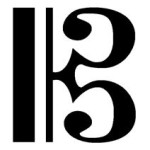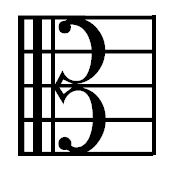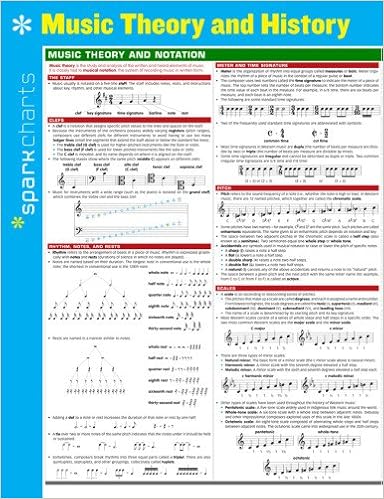| This reading music lesson is a supplement to the Alfred’s Essentials of Music Theory self-study workbook. While no book is perfect for learning how to read music, this is one of the best available. The concise explanations, brief practice exercises, ear-training CD’s, glossary of music terms, and answer key make it an excellent value. Buy this top-rated self-study course for beginners to advanced musicians and follow along with me. |
The best music theory book for self-study at home available today. Learn how to read and write music in 75 concise lessons you can complete at home. Improve your musical ear with ear-training exercises on 2 included CD's. Test yourself in a review section at the end of each unit. Check your knowledge with the answers in the back of the book.
The C Clef is a symbol on the music staff that looks like the letter “C”.
In fact, that is exactly what it used to be before it turned into a more elaborate design.
The center where the two C’s meet indicates the location of the note middle C on the staff.

This “C” can appear in any line or space of the music staff.

Moveable Clef
That is why the C Clef is considered a moveable clef. The center of the two C’s can move around to any line or space.
While this was handy in the very early stages of written music to keep all notes on the staff and avoid ledger lines (something we’ll talk about later), it can be a little bit confusing.
Fixed Clef
Now you know why later on in history, the treble clef and bass clef (which were also moveable at first) were established in standard notation “fixing” the “G” or “F” to the same line every time.
For this reason, the treble clef and bass clef are considered to be a fixed clef. Those 2 clef signs will not move around on the staff any more like the C Clef can.
More Than 1 C Clef
There are many different types of C Clefs, but most of them are not in use today.
For our purposes here, we are going to concentrate on the Alto Clef. This is the kind of a C Clef viola players still use today.
We’ll talk about this more in our next lesson.
Helpful Music Theory Reference Books and Guides
This foldable 8x10 inch music theory cheat sheet is an excellent quick reference guide when you need to find the answer fast. The side 3-hole punch allows you to keep it in a 3-ring binder. It is sturdy and folds out featuring music theory and notation on the front and music history on the back.
A practical pocket-size music theory dictionary and music notation reference guide that is perfect for all musicians from beginner to professional.
A convenient music theory book that is small enough to fit in your pocket, backpack, or instrument case. A great reference guide for all musicians at any level of music study.





I am a taxi driver in Lusaka. But i intend to attempt music theory grade 5 ABRSM exams in March 2018. Look towards being assisted in learning material.
BLESSING MUPETA